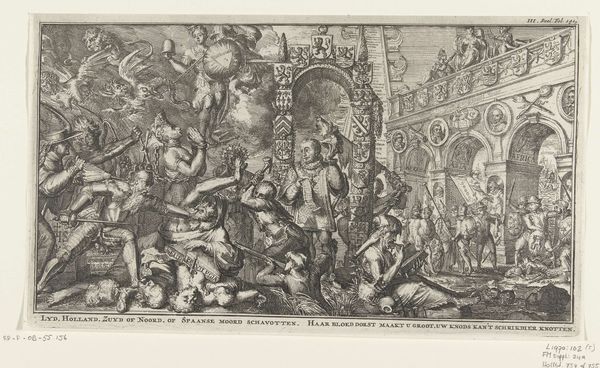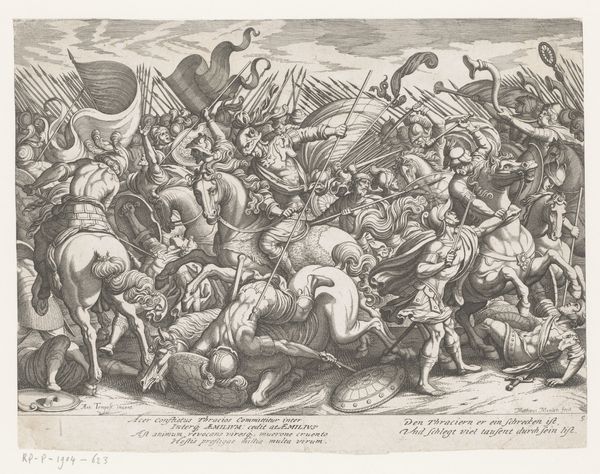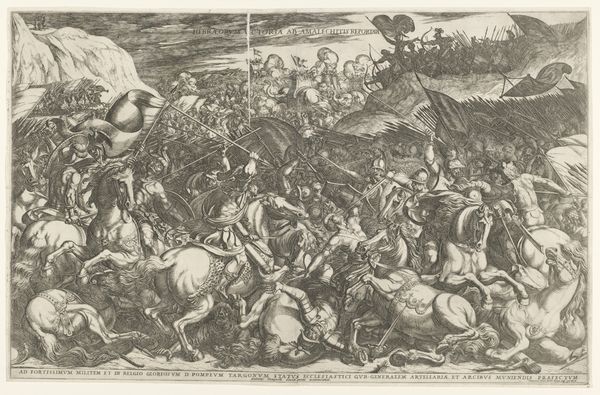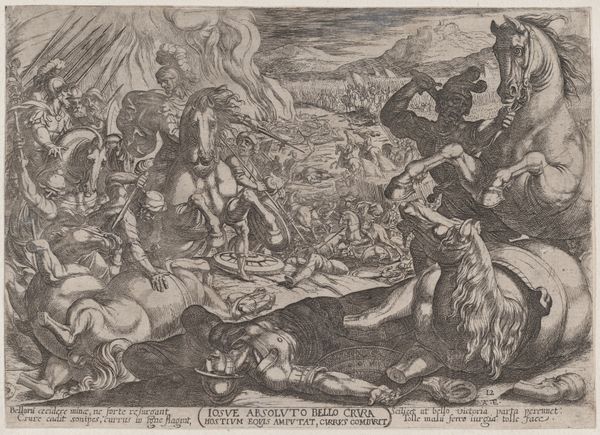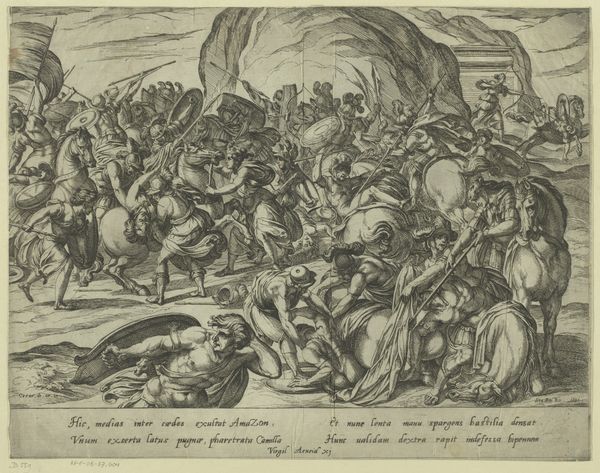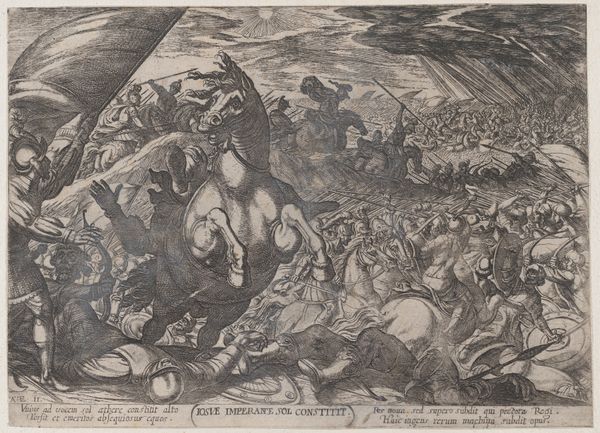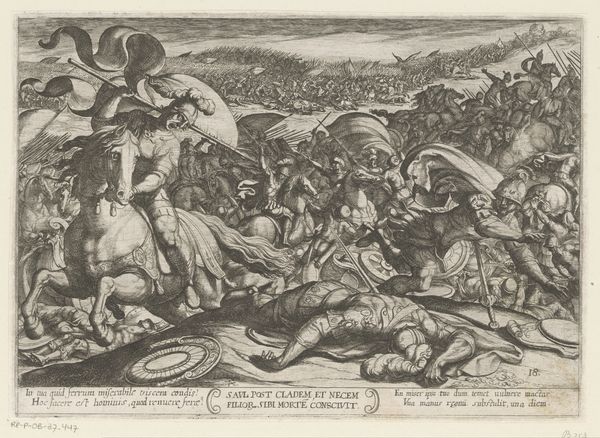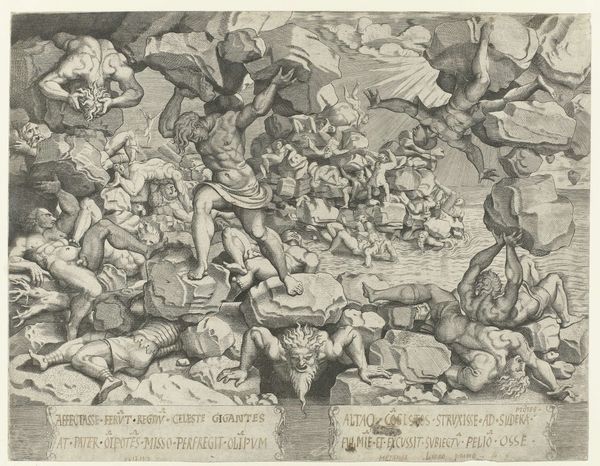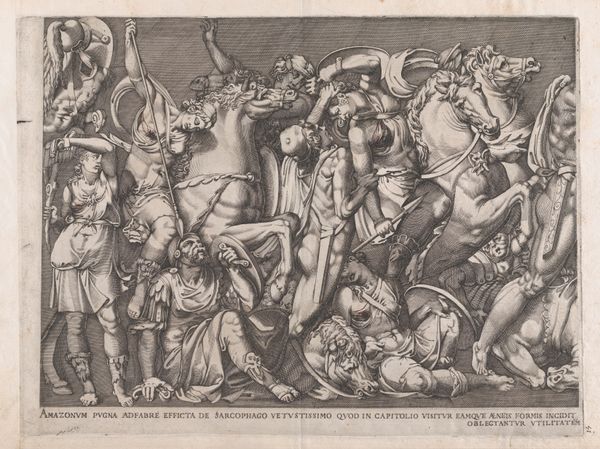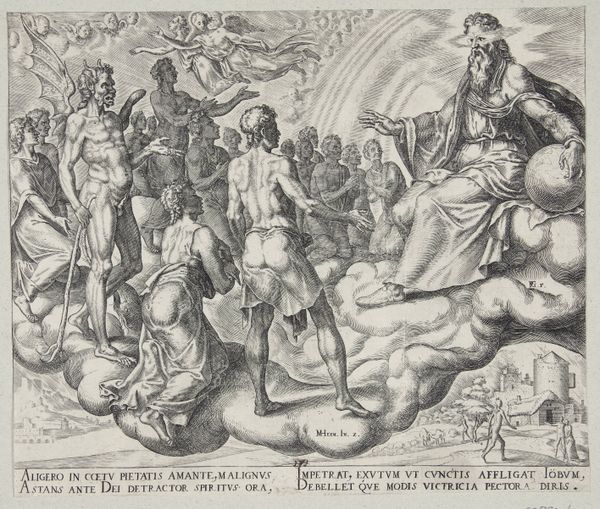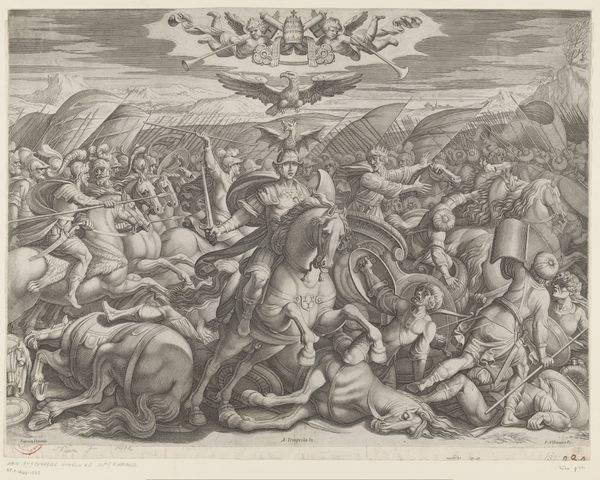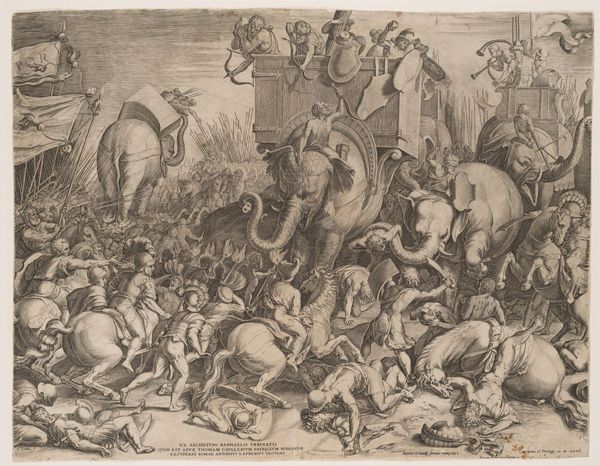
print, engraving
#
allegory
# print
#
mannerism
#
figuration
#
11_renaissance
#
geometric
#
history-painting
#
engraving
Dimensions: height 318 mm, width 417 mm
Copyright: Rijks Museum: Open Domain
This print, "Strijd tussen de goden en de giganten" or "The battle between the Gods and Giants" was made by Cornelis Bos around the mid-16th century. It is an engraving, meaning that the image was incised into a metal plate, likely copper, and then printed onto paper. Engraving is a demanding technique. It requires immense skill to control the burin, the tool used to carve the lines. The act of making such intricate lines would have been physically demanding and time-consuming. This labour-intensive process is an important aspect of the artwork. Each mark represents a conscious decision, a testament to the engraver’s control and expertise. Prints such as these circulated widely in the 16th century, allowing the populace access to classical stories and mythologies. Here, the sharp lines create a dynamic scene, full of movement and conflict. Consider the sheer amount of work involved in creating this image, and the skilled tradition within which it was made. Understanding the process allows us to appreciate the cultural significance of this print, and its connection to wider issues of labor, access, and consumption.
Comments
No comments
Be the first to comment and join the conversation on the ultimate creative platform.
